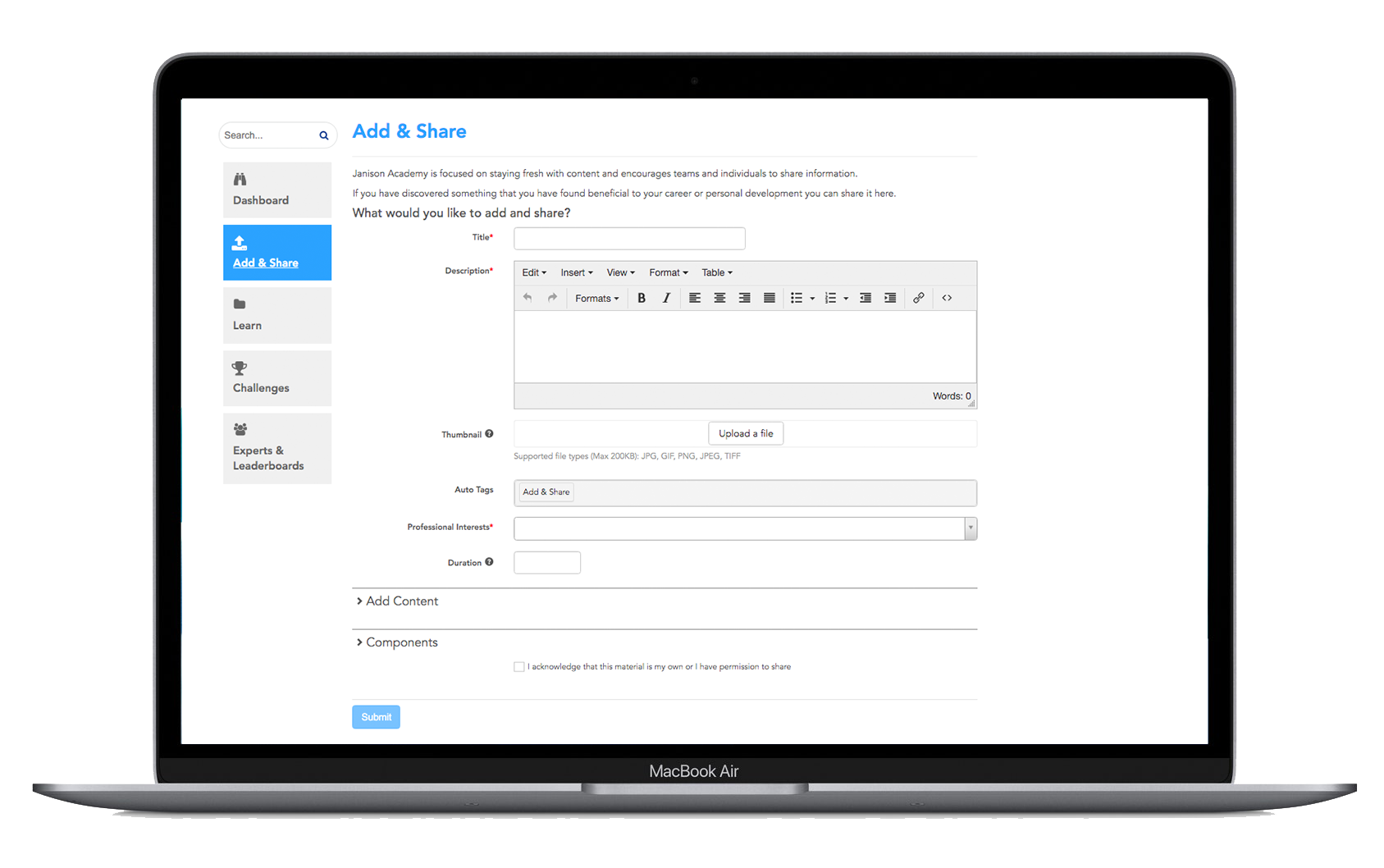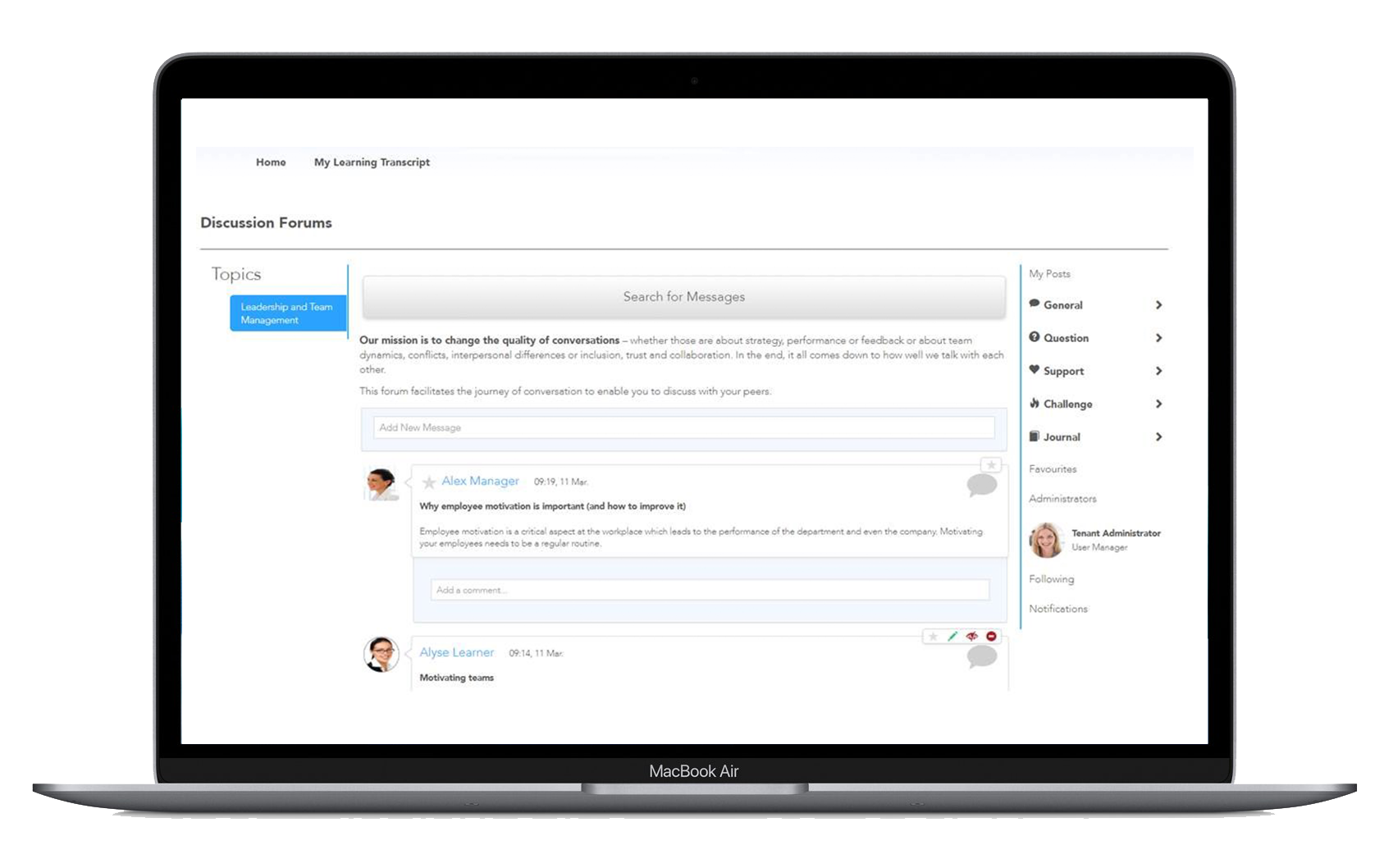To edit, or not to edit? Two approaches to user-generated content on your social learning LMS
As many workplaces continue to rise to the challenges of COVID-19, collaborative and social learning has emerged as a compelling way to upskill remote teams.
Although there was already a strong trend towards social learning pre-pandemic, the “new normal” of employees working in disparate locations calls for teams and subject matter experts to communicate.
A lot of this happens organically on tools such as Zoom, Yammer and others, while an increasing number of companies provide their employees with a formal learning management system (LMS), with built-in social learning tools that facilitate collaborative learning.
Along with L&D teams noticing a greater appetite for learning in general during COVID-19, what cannot be denied is that the act of learning has become a much more dynamic and shared exercise. Never again will learning be a passive experience.
One of the most natural extensions of a social learning platform is the notion of distributed authorship, commonly described as content authors spread across an organisation. The Janison platform allows for user-generated content to be added to the broader learning catalogue using the feature Add & Share.
What is user-generated content?
User-generated content puts learning back into the hands of your learners. It gives them the ability to create or curate, upload and share learning content with their peers using a range of formats. It can also be as simple as sharing a helpful YouTube video or TED talk with their colleagues, much like they would on a normal social platform such as LinkedIn or Facebook.
The self-publishing tool for user-generated content looks similar to a browser-based email interface or simplified version of a website back-end, with formatting and links features.

Why encourage user-generated authorship?
There are a number of reasons why this approach makes sense. Firstly, cost. Having your own employees do the work of coming up with ideas, creating, curating and publishing engaging content is far more cost-effective than hiring instructional designers and professional teachers to build and design all your organisational learning modules.
But the other – and possibly more powerful – driver is that user-generated content has the ability to drive engagement exponentially. The reasons for this are multiple. You’re effectively telling your employees that you trust them to “know their stuff”.
The other is that it stokes a healthy sense of competition when people see their peers publishing content, with employees earning bonus points on a leaderboard for uploading content.

Advertisement
Build a self-sustaining, continuous learning culture.
Create an effortless culture of lifelong learning with Janison Academy, a secure and customisable platform that offers personalised social learning experiences and intuitive self-assessment. Learn more.
Two approaches to user-generated content
1. User-driven content: the open model
Under this model, employees are free to instantly publish, create or curate and share content that they believe is useful to their peers. It’s often part of a multi-pronged approach, according to Jennifer Blackmore, social learning consultant at Janison, using a major financial services company as an example. “One of the key reasons for this company taking up the Janison product was our Add & Share, or user-generated content feature. It was a critical component of social learning for them.”
Jennifer says that the open model sat within a three-layer approach at the company:
- Formal-type learning, which sits in the platform made by content designers, added more formally through the learning platform.
- The “armchair component” which gives the company’s key subject matter experts the ability to build and launch their own content within their speciality area.
- A global ability for all learners, company-wide, to share and add all types of content into the learning catalogue at their whim.
When it comes to the second and third components of the approach, Jennifer says the company chose not to moderate the content that was coming through.
“Tested over a pilot period, they found that the biggest advantage of this approach was giving their learners the opportunity to be able to learn from each other. The company thought that by moderating content it would inhibit people from doing that and it could disengage them.
“There’s always that thought in people’s mind that ‘Big Brother’ is watching and the company wanted to make sure that that absolutely wasn’t the case,” says Jennifer.
“The way that the platform had been marketed was that this is a social learning platform and it’s meant to provide you with the ability to share and learn whenever you feel you need to – anytime, anywhere and on any device. So, if the L&D team then started to intervene on that it kind of cuts that line.”
What about the impact on duplication of content and content quality? “It’s a reasonable concern”, says Jennifer. “You’ll never stop duplication even when you’re using traditional learning management system (LMS) and especially when your learning teams are decentralised and different learning teams are always adding content.”
Having in place a governance framework supporting cyclical reviews and auditing of content will also help.
Somewhat surprisingly, the free publishing of content across the company led to an element of organic moderation between colleagues, without the need for interference from the L&D team.
“We’d see a lot of comments on the catalogue items from other employees telling the original author that ‘this is probably not right/not learning’, ‘take it down’ or ‘adjust it’.
“Our client also made sure that they had guides and one-pagers sitting in the platform that employees could refer to that explained, what constitutes learning and what doesn’t and how to create effective and engaging content.”
There are significant psychological advantages to giving your employees the trust to add, share and publish their own content while not being moderated, especially in an environment where workforces around the country are working remotely.
“It just displays to the employee that you are trusted, and it really helps people to feel that they’re still connected. The trust is a really big thing for employees, it helps them to feel like they’re not being micromanaged.”
2. User-driven content: the moderated model
Jennifer compared this with a different approach taken by a second company that delivers social learning. The company, also a financial institution, chose to add a moderation layer to the Add & Share model.
This meant that when employees uploaded content via Add & Share, it went to through an approval workflow ,was vetted by an administrator within the L&D department, and was then published to the platform.
It would be moderated on factors such as relevance, duplication, quality and correctness of the content.
Were there any advantages of this approach? “It reduces the need to later have to audit content through the platform” said Jennifer.
“So, the first client had to have a very good governance audit and review process that they used to carry out on a cyclical basis. They would look at published content and anything that was rated under three stars would automatically be deleted. But if you’re moderating as you go there’s no need to do that.
“It is also important to note that there is an element of managing risk associated with moderation, especially in regulated environments such as finance and banking,” added Jennifer.
“But at the end of the day you still need people to be doing the work of moderating, either before it hits the platform or after it is published.”
The take-aways
No matter which avenue you decide is the more suitable for your organisation, it helps to bear these points in mind when it comes to user-generated content:
- Allowing your staff to self-publish is a hugely powerful way to give them a sense of purpose during a time of uncertainty
- Seeing content shared and commented on by peers is a visible sign that they’re contributing directly to the business
- Tools that encourage sharing take on a natural momentum (just think of Facebook!)
- People love hearing from their colleagues during a time of isolation and remote working
- Both methods – moderated and unmoderated – can present significant cost savings.
Jennifer says: “The pandemic has proven that you can work remotely and that there are ways you can help people feel connected. Social learning is really one of those things.”
Want to harness the knowledge within your team with user-generated content? Contact us for a demo of our social learning platform today.
About the author
Ewa Jaremka
Contributor
You might also like
Soft skillsTeamworkEmotional intelligenceLeadershipVirtual teamseLearning contentLifelong learningSocial learningLearning pathwaysGamified learningCoronavirusOnline learningTechnology & innovationTrends & the future of work
Social Learning: The Gateway to Essential Soft Skills in a Post-COVID Workplace [eBook]
Want to learn more about our tailored solutions?
Chat to one of our assessment or learning consultants today.
or call us on 1300 857 687 (Australia) or +61 2 6652 9850 (International)




